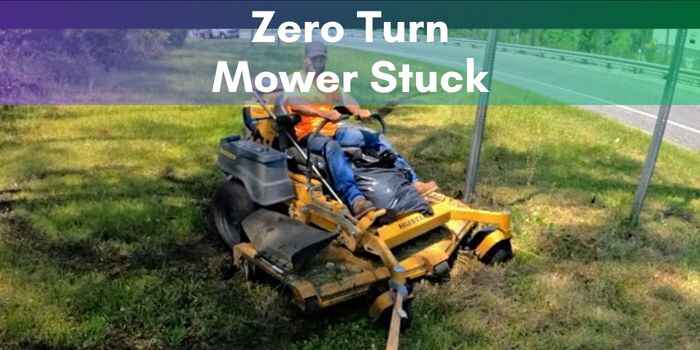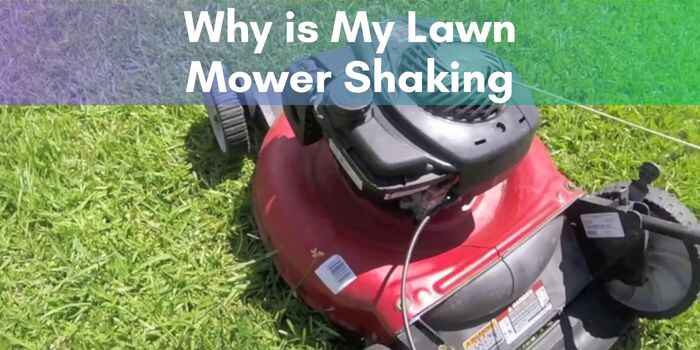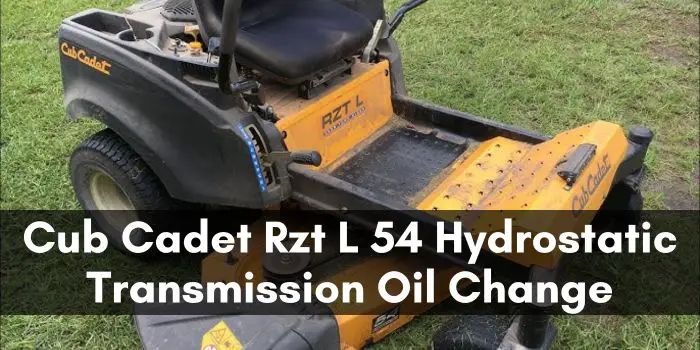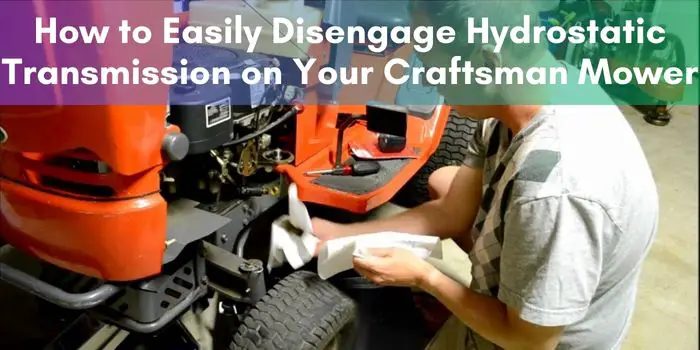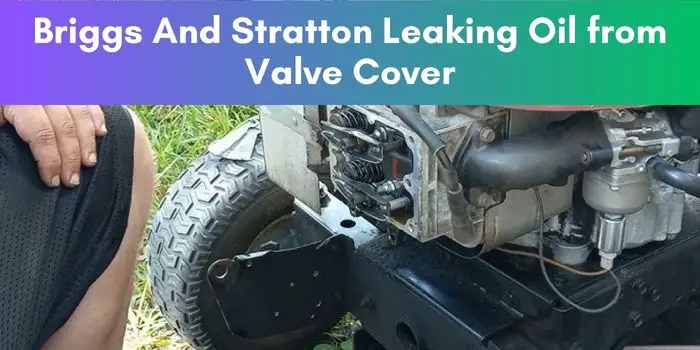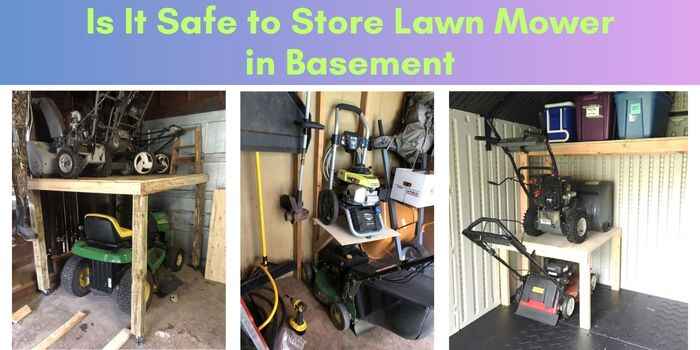Why Isn’t My Lawnmower Collecting Grass? Troubleshooting Tips
Your lawnmower may not be collecting grass properly due to a full bag or a blockage in the chute. A dull blade can also contribute to ineffective grass collection.
Achieving a manicured lawn is a point of pride for many homeowners, yet a common issue faced is the lawnmower’s inability to collect grass clippings efficiently. Such a problem can stem from various issues, from simple maintenance oversights to more complex mechanical malfunctions.
Ensuring your lawnmower operates at peak performance involves regular upkeep and troubleshooting. A clogged collection bag or chute, a worn or incorrectly adjusted blade, and damp grass are typical culprits that disrupt proper grass collection.
Maintaining sharp blades, regular cleaning of the undercarriage, and checking for wear and tear will help keep the lawnmower’s collection system functional.
With a focus on these areas and consistent care, your lawnmower can return to efficiently tidying your yard.
Troubles With Lawnmower Grass Collection
When your lawnmower doesn’t gather grass clippings, frustration mounts. Quality mowers should make yard work easier, not harder.
Few things are as perplexing as a lawnmower that refuses to collect grass properly.
Mowers are designed for tidy lawns, but issues can crop up. Let’s solve this grassy puzzle.
Symptoms Of Collection Issues
- Grass clippings left on the lawn
- Uneven or clumped final job
- Bag not filling, even with extended mowing
- Increased spillage from the mower
These signs suggest your mower needs a closer look. In many cases, solutions are simple yet crucial.
The Importance Of Regular Maintenance
A well-maintained lawnmower is a key to smooth grass collection. Here’s what regular upkeep involves:
| Task | Frequency |
|---|---|
| Check and replace the bag | As needed |
| Clean the undercarriage | After each use |
| Sharpen the blades | Every 20-25 hours of use |
Regular maintenance not only fixes grass collection issues but also extends your mower’s life. Clean blades and undercarriage ensure efficiency and effectiveness in every run.
Checking The Basics
Welcome to the “Checking the Basics” section of our lawn care troubleshooting guide. Before delving into complex repairs, it’s important to cover some foundational checks.
A lawnmower that fails to collect grass properly can turn a day of gardening into a hassle. Quite often, the issue lies with simple oversight.
Let’s make sure the basics are in order for a well-functioning collection system.
Is The Collection Bag Correctly Fastened?
A common culprit for poor grass collection is a bag not securely attached to your lawnmower.
If it’s loose, clippings might escape or not enter the bag at all. Inspect the attachment points. Make certain all hooks or clips are in place. The mouth of the bag should snugly fit the discharge chute. A correct fit means no gaps or loose ends.
Ensuring The Bag Is Not Overfilled
Capacity matters when it comes to collecting grass clippings. An overfilled bag can’t take in more grass. Your lawnmower works best when the bag has room to breathe.
Here’s a quick checklist to prevent overfilling:
- Monitor the bag’s fill level regularly – don’t wait for it to bulge.
- Empty the bag before it reaches the top.
- Check for clumping which could block new clippings from settling.
If you’re frequently stopping to empty the bag, consider mowing more often. This avoids thick layers of grass that fill bags quickly.
Blade Sharpness And Condition
A sharp blade is crucial for an efficient lawnmower. A dull blade tears the grass, creating an uneven cut and risking disease.
For a lawnmower that collects grass, the blade’s condition impacts not only the quality of cut but also its ability to channel cut grass into the collection bag.
Impact Of Dull Blades
Dull blades affect lawnmower performance. Here’s how:
- Torn grass tips lead to an unsightly lawn and potential grass disease.
- Reduced cutting efficiency means more passes to mow the same area.
- Poor collection is due to lack of suction created by the blade’s action.
When To Sharpen Or Replace
Knowing when to sharpen or replace mower blades is essential:
| Check Frequency | Action Required |
|---|---|
| After 25 hours of use | Inspect for dullness |
| Visibly damaged | Replace immediately |
| Season start and mid-season | Professional sharpening |
Sharp blades ensure a clean cut, efficient mowing, and proper grass collection. Check, sharpen, or replace your lawnmower blades regularly for best performance.
The Role Of Airflow
Airflow is crucial for a lawnmower to collect grass effectively. Without proper airflow, the grass clippings cannot circulate and enter the collection bag.
It’s like trying to drink a thick shake with a narrow straw; the thicker the shake, the harder to move it through.
Let’s investigate common airflow hindrances and how to address them.
Clearing Blockages
Blockages disrupt airflow within a lawnmower’s system. A blockage is often due to wet grass clippings or debris stuck in the mower’s deck.
Perform these steps to clear blockades:
- Turn off the lawnmower and disconnect the spark plug.
- Remove the collection bag and empty it.
- Check for and remove grass or mud clogging the discharge chute.
- Clean the underside of the mower deck, ensuring the blades are clear.
Assessing The Air Filter
Air filters trap dust and particles to protect the engine. A dirty filter can starve the mower of air.
To assess the air filter:
- Determine the location of the air filter.
- Open the filter’s housing and examine it for dirt.
- If the filter is paper, tap gently to remove dust or replace if very dirty.
- For foam filters, wash with soap and water, then oil lightly before reinserting.
Deck Maintenance For Optimal Performance
Your lawnmower’s performance depends on regular upkeep, particularly of its deck. That’s where all the action happens.
The deck shields the blades that cut the grass. Over time, a poorly maintained deck can affect how your lawnmower collects grass.
Let’s focus on keeping the deck in prime condition for outstanding mowing results.
Cleaning The Undercarriage
Clumps of grass and debris often clog the mower’s undercarriage. This mess can prevent the blades from spinning freely. It also stops grass from traveling into the collection bag.
Here’s a simple checklist to ensure the undercarriage is clean:
- Disconnect the spark plug wire for safety.
- Tip the mower on its side. Make sure to tilt it in a way that prevents oil from leaking into the air filter.
- Use a putty knife or scraper to dislodge dried grass and mud.
- For stubborn debris, spray with a garden hose. Allow the undercarriage to dry thoroughly.
Checking For Rust And Damage
The deck’s integrity is crucial for your lawnmower to collect grass effectively. Rust and damage can create holes or change the deck’s shape. This impacts airflow and grass collection. Perform these checks regularly:
| Action | Purpose |
|---|---|
| Inspect for rust | Prevents holes and ensures strength |
| Check for dents | Maintains proper deck shape for airflow |
| Look for loose parts | Secures components for smooth operation |
After inspection, sand off any rust spots. Apply a rust-inhibiting primer and paint to protect exposed metal. Replace damaged parts to keep your lawnmower in top shape.
Bag And Chute Obstructions
Having trouble with your lawnmower’s grass collection? Bag and chute obstructions could be the culprit. Your lawnmower’s bagging system swiftly collects clippings for a tidy lawn. But what happens when grass clutters the route?
Inspecting For Clogs
First, safety comes first. Turn off the mower. Unplug electric mowers or remove spark plug wires on gas models. This prevents accidental starts.
- Check the bag for holes or wear. Replace if needed.
- Empty the bag if it’s full. A full bag restricts airflow, blocking further collection.
- Look inside the chute for clogs. Wet grass often clumps and clogs.
- Use a stick or tool to clear any blockage. Avoid using hands in the chute.
Proper Chute Installation
Improper chute installation can cause significant collection issues.
- Refer to the owner’s manual. It provides specific instructions for your model.
- Ensure the chute aligns correctly with the opening.
- Secure all attachments firmly. Loose parts can misdirect clippings.
- Double-check that the chute’s path is free of obstructions post-installation.
Solve bag and chute issues and see your mower collect grass effectively. Keep your lawn and mower happy!
Grass Conditions And Length
Is your lawnmower not collecting grass clippings as it should? The issue often lies with ‘Grass Conditions and Length‘. Understanding how these factors affect your mowing can make a huge difference.
Let’s dive deeper into the common problems and simple fixes you can try today.
Mowing Wet Grass
Mowing wet grass is a common mistake. Mowers struggle to pick up wet clippings. The moisture weighs down the grass, making it stick to the ground and to the mower’s blades.
Wet clippings clump together, clogging the mower’s bag and chute. For an effortless mow:
- Wait for the grass to dry.
- Clean the mower deck to prevent sticking.
Adjusting Cutting Height
The right cutting height is crucial. Too short and the mower can’t lift clippings. Too tall and the mower might leave clumps.
Follow these steps:
- Set the mower to the ideal height. Typically one-third of the grass blade.
- Adjust height seasonally. Higher in summer, lower in spring and fall.
Technical Failures
Imagine a sunny day perfect for mowing your lawn but your mower refuses to collect grass. This is frustrating, isn’t it?
Often, technical glitches in your lawnmower are the culprits. Under the hood, several components must work seamlessly for efficient grass collection. Dissecting these can pinpoint the issue. Here’s how you can troubleshoot common technical failures.
Troubleshooting Drive Belts
Drive belts are the lifeline of your lawnmower’s grass collection. A worn-out or snapped belt means no power transmission to the necessary parts.
- Check your mower’s manual to locate the drive belts.
- Inspect for signs of wear, tear, or damage.
- Look for proper tension — too loose or too tight can cause issues.
Replacing faulty drive belts is often easy and can restore grass collection quickly.
Engine Performance
Your mower’s engine affects how it collects grass. A struggling engine can’t spin the cutting blade fast enough to create suction for collecting clippings.
- Ensure routine engine maintenance, like oil changes and air filter checks.
- Maintain an eye on the spark plug for cleanliness and proper gap settings.
- Assess the carburetor for clogs that may impair engine power.
Professional Maintenance And Repairs
Is your lawnmower not collecting grass effectively? It could signal that the machine requires professional attention. Regular maintenance keeps your lawnmower running smoothly.
Yet, certain issues demand expert intervention, ensuring your equipment operates at peak performance.
When To Call A Professional
Recognize when your lawnmower needs a professional touch:
- Unusual noises: Strange sounds often suggest internal issues.
- Poor performance: If your mower leaves grass uncut, get it checked.
- Visible damage: Bent blades or damaged parts warrant a pro look.
- Starting troubles: Consistent start-up failures are a red flag.
Cost Vs. Benefit Of Repairs
Balance the costs with the benefits of fixing your lawnmower:
| Repair Factor | Cost | Benefit |
|---|---|---|
| Professional service | May be higher | Improved longevity and performance |
| Parts replacement | Varies by part | Prevents further damage, saves future costs |
| Tune-ups | Minimal | Ensures efficient operation and fuel use |
Investing in professional maintenance ensures your lawnmower runs efficiently, extends its life, and saves money long-term. Avoid costly replacements by addressing issues early with a professional’s help.
Frequently Asked Questions
Why Is My Lawn Mower Not Picking Up All The Grass?
Your lawn mower may not pick up grass if the bag is full, blades are dull, cutting height is too low, or debris clogs the deck. Ensure regular maintenance for optimal performance.
Why Is My Lawn Mower Leaving Clumps Of Grass?
Your lawn mower may leave clumps of grass due to wet conditions, a full mower bag, dull blades, or cutting too much grass at once. Ensure your lawn is dry, the bag is empty, the blades are sharp, and you mow regularly for best results.
Why Does My Mower Leave A Strip Of Grass?
A mower may leave a strip of grass if the blades are dull, overlapped cutting paths are insufficient, or the mower deck is uneven. Regular maintenance and correct overlapping during mowing can help prevent this issue.
How Can I Improve My Lawn Mower Suction?
To improve lawn mower suction, regularly clean the deck, replace air filters, sharpen blades, ensure the grass catcher is not clogged, and mow dry grass only.
Final Words
Resolving your lawnmower’s grass collection issues is key for a tidy garden. Check blades, airflow, and bag integrity, ensuring proper mower maintenance.
For persisting problems, professional advice may be needed. Remember, regular upkeep keeps your lawnmower performing at its best, making your lawn the envy of the neighborhood.


